Strategies for optimising glufosinate and tackling efficacy challenges
Strategies for optimising glufosinate and tackling efficacy challenges
Author: Christopher Preston (School of Agriculture, Food & Wine, University of Adelaide) | Date: 06 Feb 2024
Take home messages
- Glufosinate is a charged herbicide, which influences its absorption.
- Translocation of glufosinate is the limiting factor for control. Translocation is decreased with lower temperatures after application.
- High humidity at application is essential for glufosinate uptake and hence, performance.
Chemistry of glufosinate
In understanding the issues with glufosinate efficacy, it is useful to start with a discussion of the chemistry of the herbicide. Glufosinate has structural similarities to glyphosate and, like glyphosate, is a charged herbicide (Figure 1). Like glyphosate, the charge on the herbicide will change with the solution pH. The pKa described is for the second pKa for each herbicide. While it is possible to reduce the overall charge on glyphosate by reducing the pH of the spray solution, the spray solution for glufosinate will have to be below pH 2.9 to achieve this.
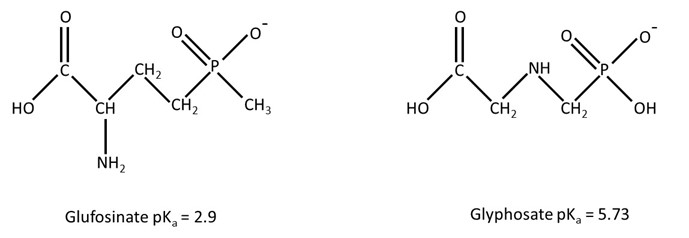
Figure 1. Chemistry of glufosinate compared to glyphosate.
Charged and polar herbicides are unable to pass through the wax layer of the cuticle. Instead, they enter the leaf through pectin strands within the cuticle. These pectin strands contain negative charges, making it harder for negatively charged herbicides to enter the leaf.
Absorption of glufosinate is important for efficacy
Absorption of glufosinate, like glyphosate, into leaves is relatively slow (Figure 2). Temperature makes a small difference to glufosinate absorption; however, humidity is a much more important factor. Light also increases absorption of glufosinate. Low humidity conditions reduce the amount of water associated with the pectin strands within the cuticle, making it harder for negatively charged herbicides like glufosinate to enter the leaf. Low humidity is normally not a problem in winter in southern Australia and high humidity only needs to be present for the first 24 hours after application for most of the herbicide to be absorbed.
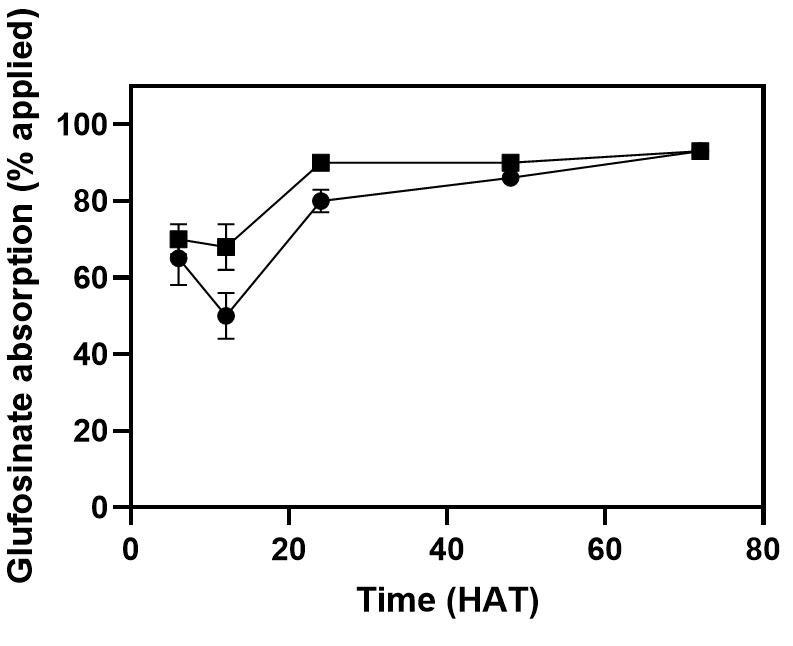
Figure 2. Absorption of glufosinate into wild radish plants grown under controlled conditions at two temperatures of 5/10oC (circles) or 20/25oC (squares). From Kumaratilake and Preston 2005.
Translocation of glufosinate is the limiting factor for efficacy
Unlike glyphosate, which is rapidly translocated around plants after being absorbed, translocation of glufosinate is much slower. This makes translocation the main limiting factor for efficacy. Experiments on annual ryegrass and wild oats under controlled conditions show that glufosinate controls wild oats more easily than annual ryegrass (Figure 3). The reason for this difference in control is because glufosinate translocation from the treated leaf is much lower for annual ryegrass than for wild oats.
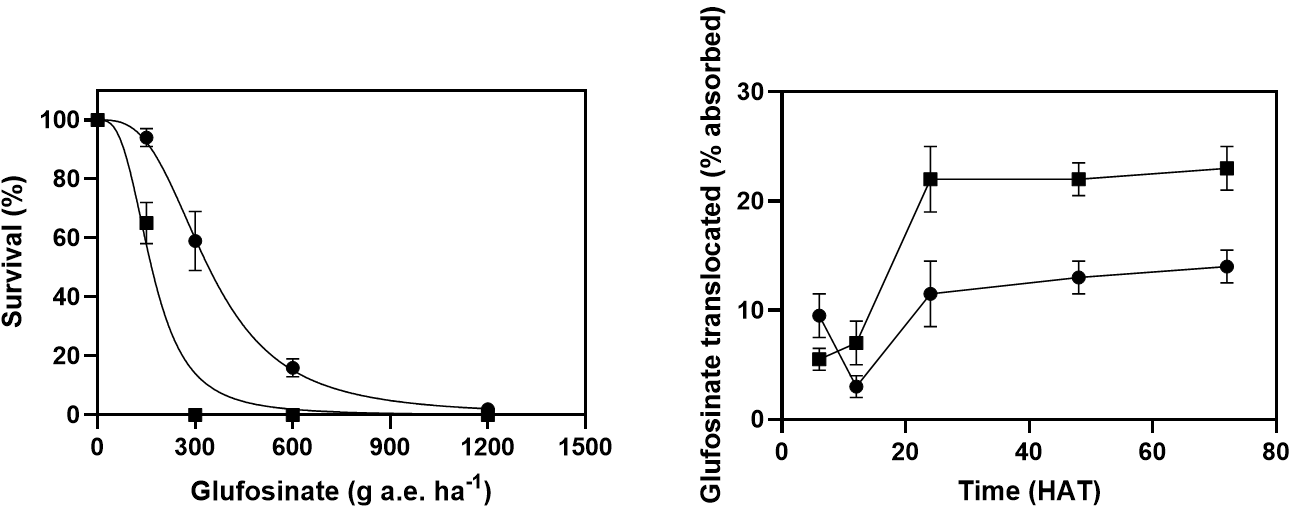
Figure 3. Left – survival of annual ryegrass (circles) and wild oats (squares) following treatment with glufosinate under controlled conditions. Right – translocation of glufosinate from the treated leaf to the rest of the plant in annual ryegrass (circles) and wild oats (squares). From Kumaratilake et al. 2002.
The amount of translocation of glufosinate is much lower than is typically seen with glyphosate, so any factor that will reduce translocation of glufosinate is likely to lead to greater survival. One of those factors is temperature. Experiments with wild radish under controlled conditions show that wild radish can be controlled at warmer temperatures, but there is very poor control at cool temperatures, even with high rates of herbicide. The reason for the poor control at low temperatures is that almost no glufosinate is translocated from the treated leaf to the rest of the plant. At higher temperatures, significantly more glufosinate is translocated from 48 hours (Figure 4).
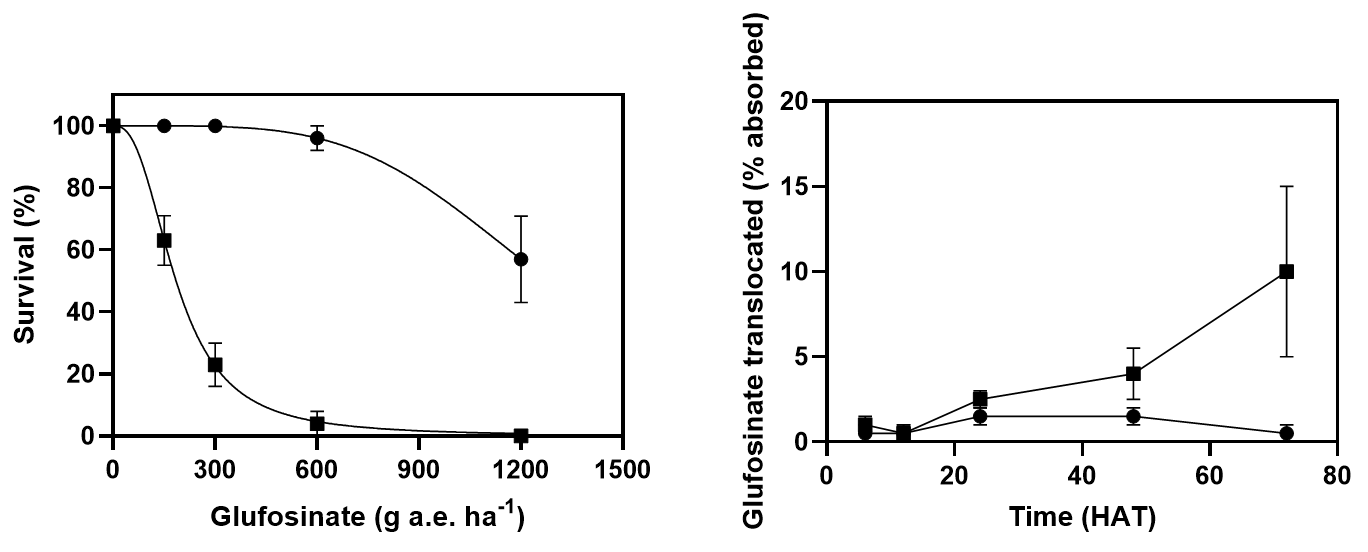
Figure 4. Left – survival of wild radish treated with glufosinate grown under controlled conditions at two temperatures of 5/10oC (circles) or 20/25oC (squares). Right – translocation of glufosinate from the treated leaf to the rest of the plant in wild radish at two temperatures of 5/10oC (circles) or 20/25oC (squares). From Kumaratilake and Preston 2005.
Mode of action of glufosinate
Glufosinate is an inhibitor of glutamine synthetase and exerts its herbicidal effect through inhibiting the recycling of carbon intermediates required for carbon fixation. This results in reactive oxygen species (ROS) generated out of the photosynthetic electron transport chain that produce the characteristic bleaching and wilting symptoms.
The rapid development of symptoms is unlike glyphosate, which has slow development of symptoms. This means that the action of glufosinate can reduce translocation of the herbicide by trapping the herbicide in damaged tissue. This does happen as translocation to other leaves is greater when the treated leaves are covered, than when they are exposed to light (Figure 5). While rapid action of glufosinate does reduce glufosinate translocation, it is not the reason for the lack of substantial systemic effect of glufosinate. The low amounts of herbicide translocation in many plant species is the limitation for glufosinate activity.
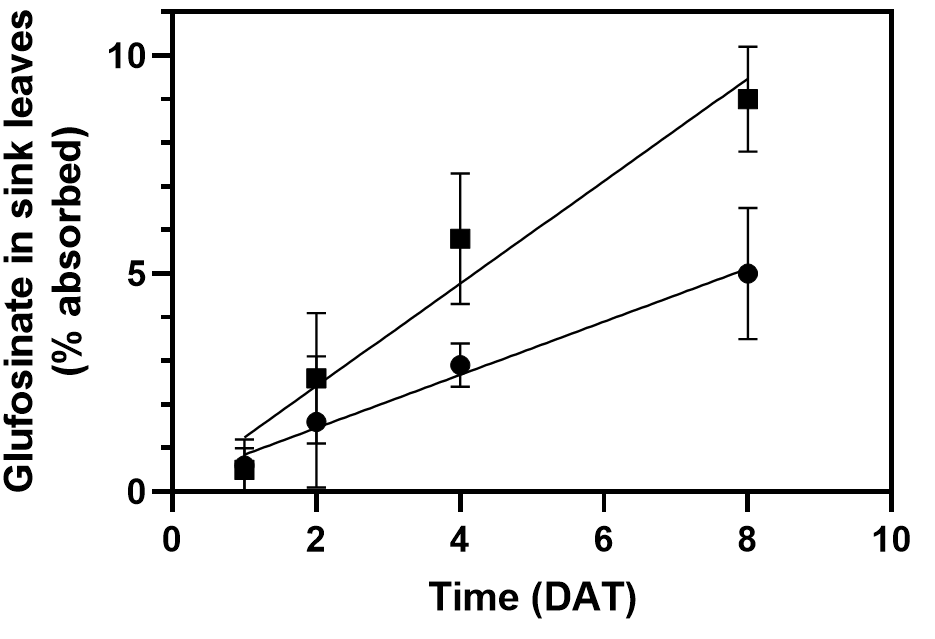
Figure 5. Translocation of glufosinate to source leaves in palmer amaranth when the source leaves were covered with foil (squares) or left uncovered (circles). From Takano et al. 2020.
Obtaining better control with glufosinate
As translocation is the limiting factor in glufosinate control of weeds, the main strategies should be to minimise the factors that reduce translocation of the herbicide. The main factor is temperature in the days after application. Therefore, applying glufosinate when there is warmer weather predicted should improve control over conditions when there are cooler temperatures, particularly at night. Like many herbicides, avoiding frosty conditions will improve control.
The other way to increase the amount of glufosinate translocated is to increase the amount of herbicide absorbed. Using the highest rate available, rather than a lower rate will provide increased control by increasing the amount of glufosinate absorbed. Applications in the morning, when humidity is often higher, rather than in the afternoon should increase absorption and hence, the amount of glufosinate translocated. Obtaining good coverage and application to small weeds, particularly for hard-to-control weeds, such as annual ryegrass and wild radish, will improve control.
References
Kumaratilake AR, Lorraine-Colwill DF, Preston C (2002) A comparative study of glufosinate efficacy in rigid ryegrass (Lolium rigidum) and sterile oat (Avena sterilis). Weed Science 50, 560-566.
Kumaratilake AR, Preston C (2005) Low temperature reduces glufosinate activity and translocation in wild radish (Raphanus raphanistrum). Weed Science 53, 10-16.
Takano HK, Beffa R, Preston C, Westra P, Dayan FE (2020) Physiological factors affecting uptake and translocation of glufosinate. Journal of Agricultural and Food Chemistry 68, 3026-3032.
Contact details
Chris Preston
School of Agriculture, Food & Wine
University of Adelaide
0488 404 120
christopher.preston@adelaide.edu.au
